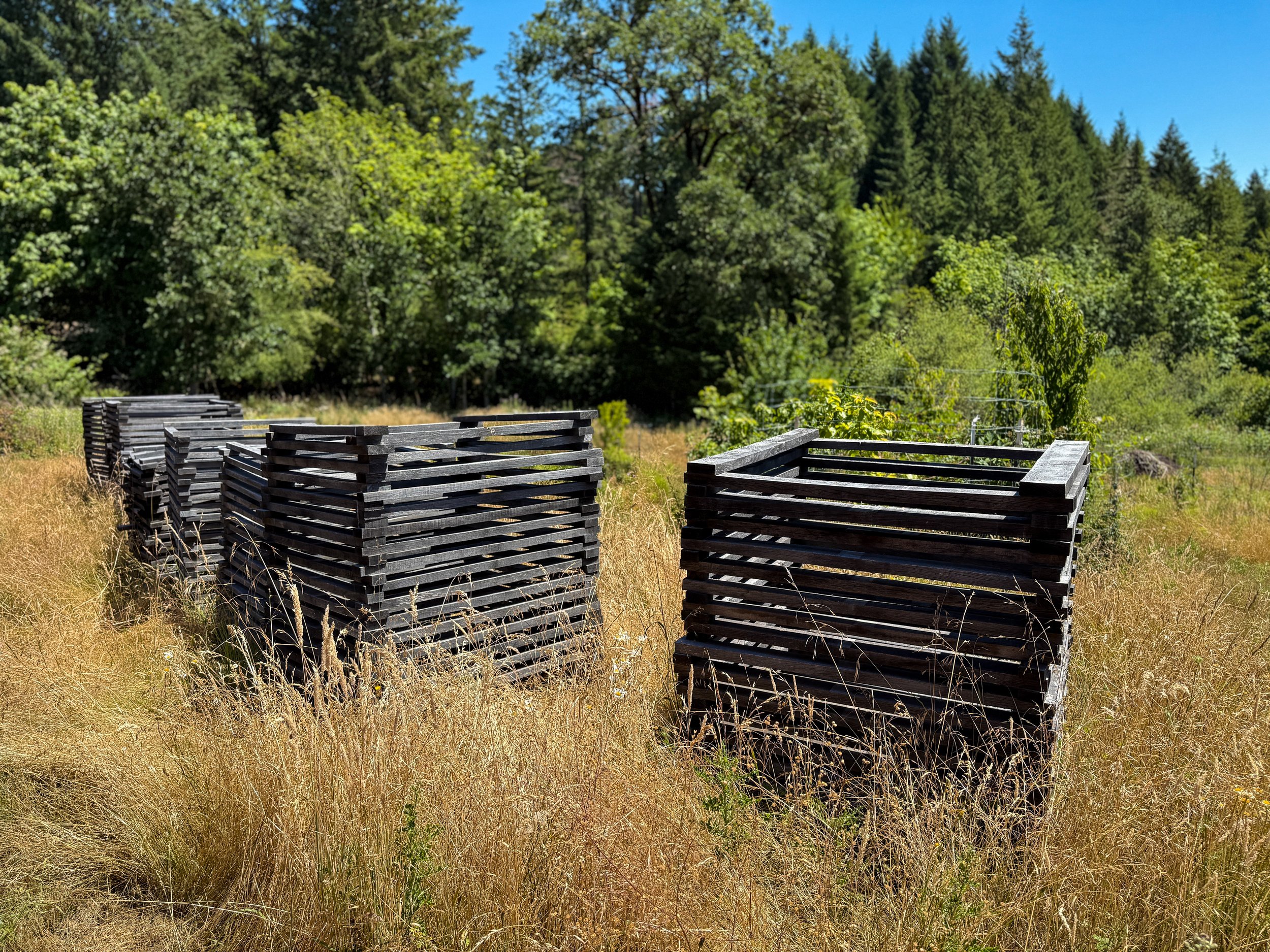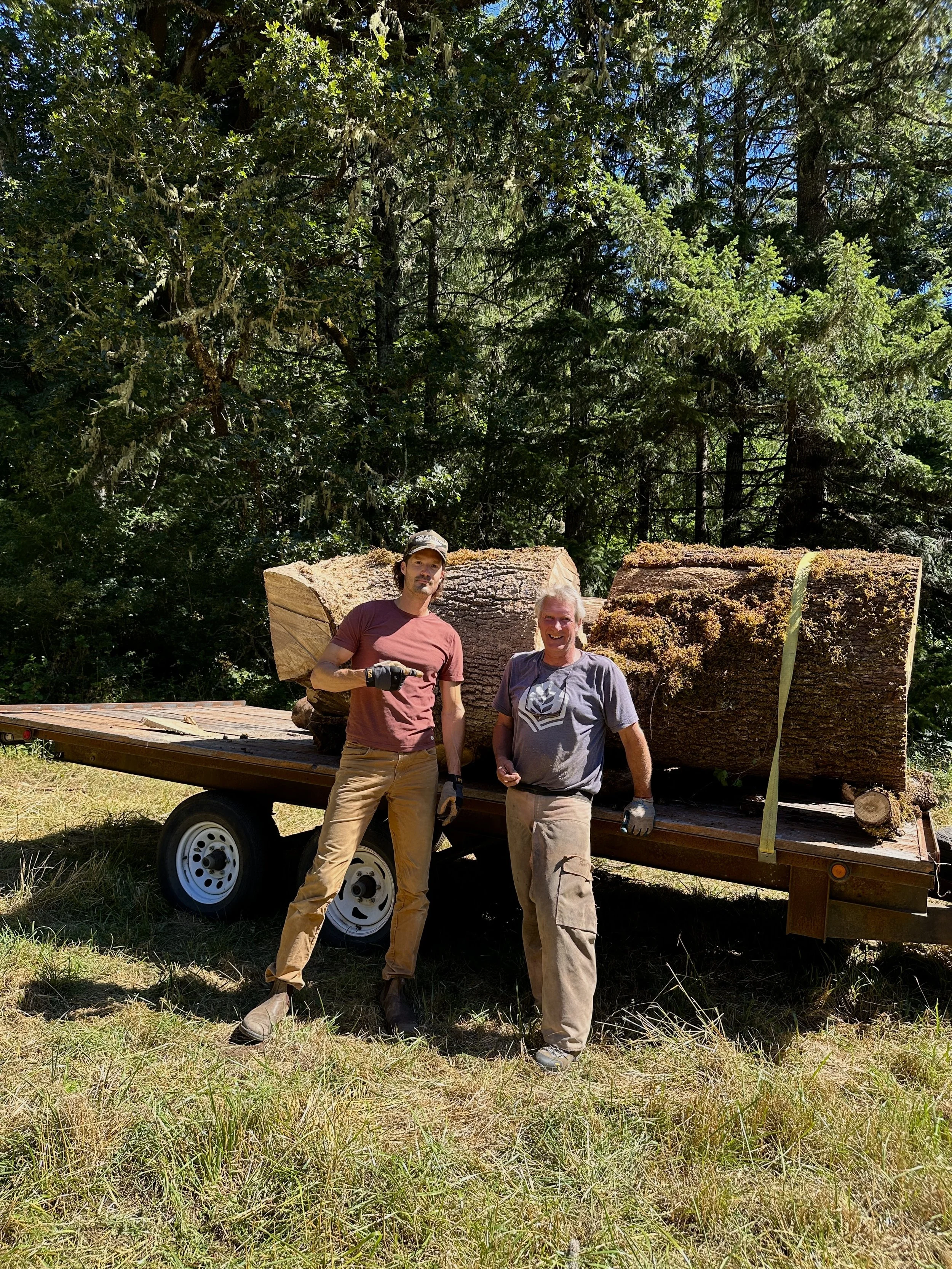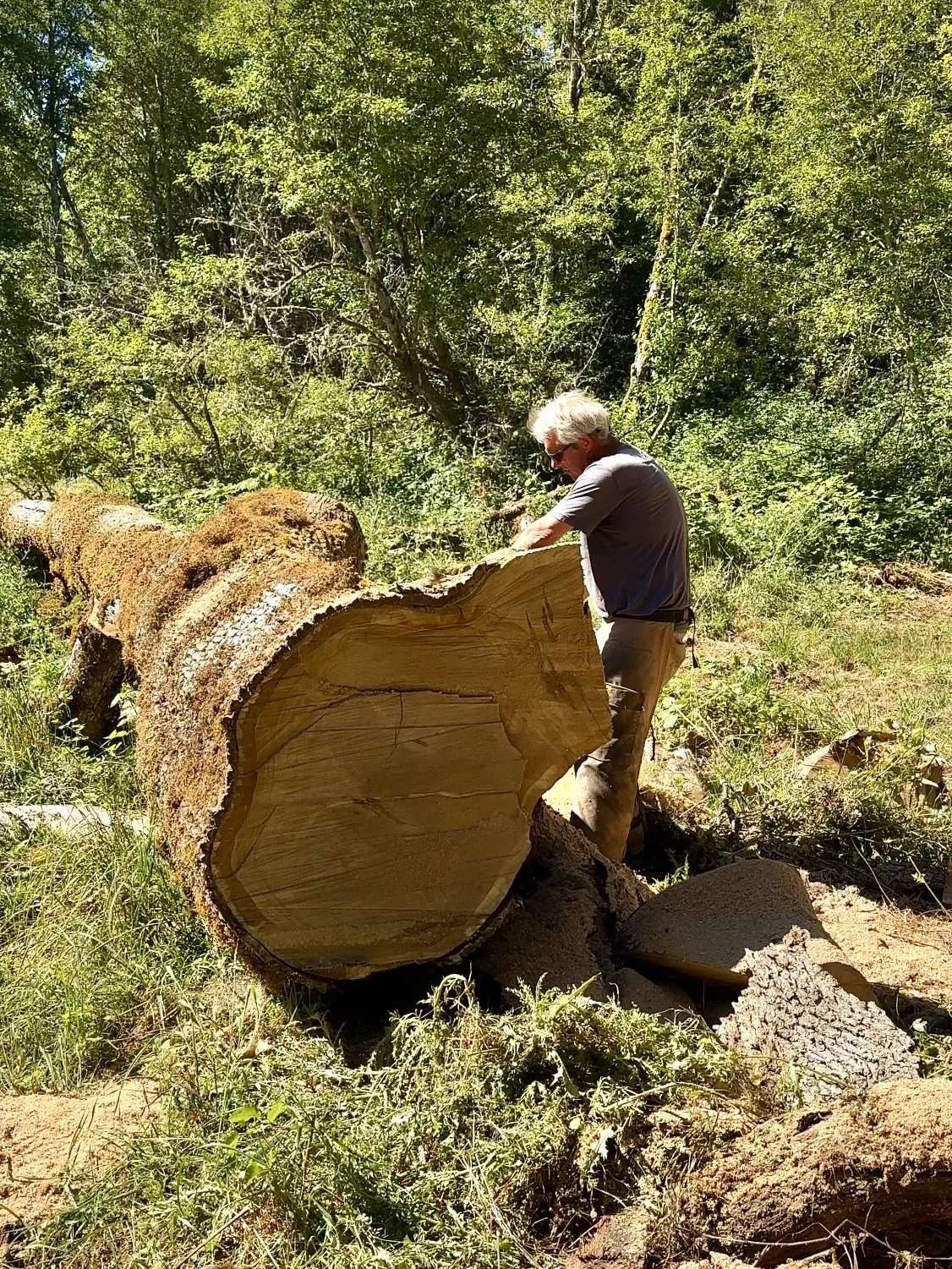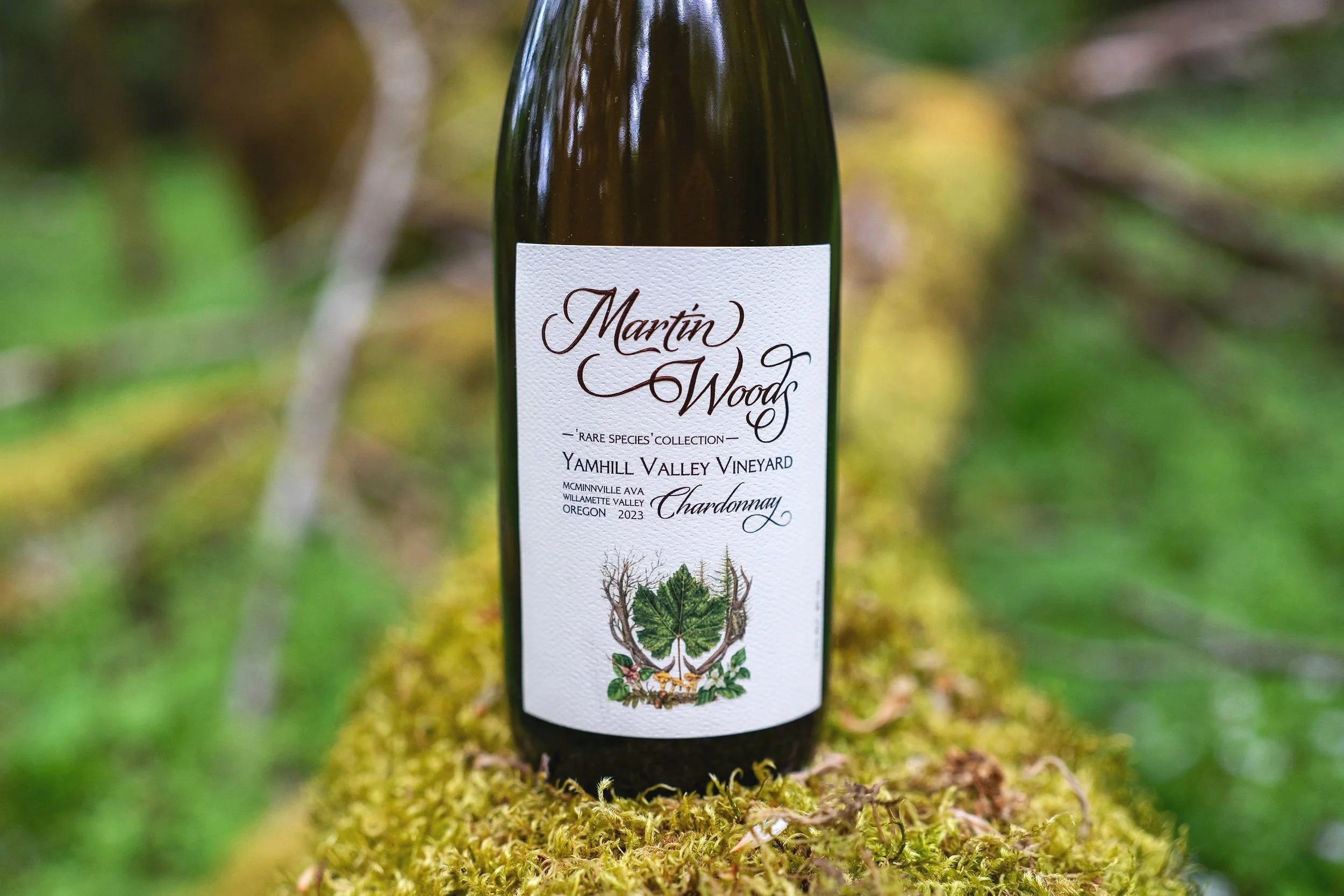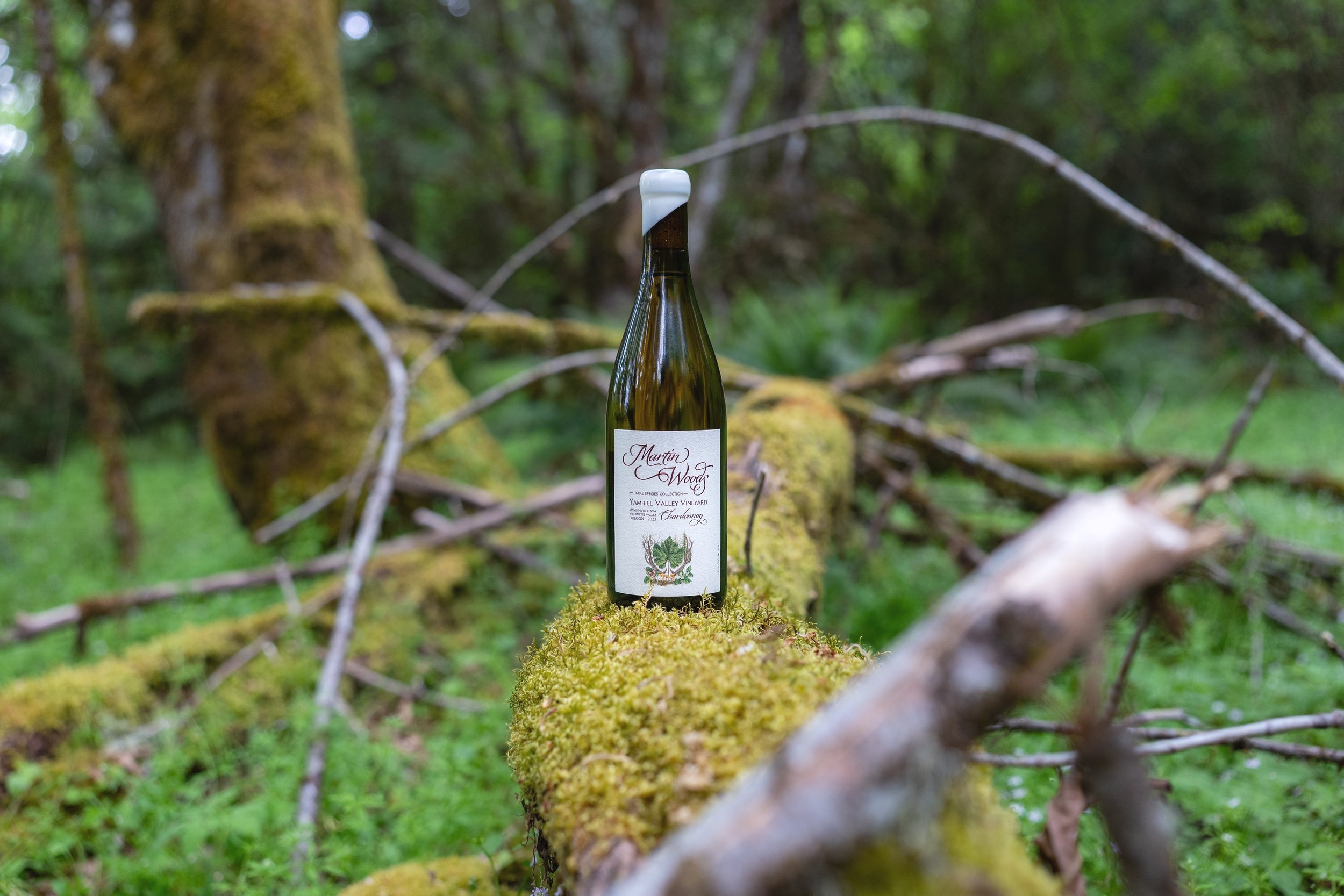
‘Rare Species’ Collection
/ Rare Species /
Uncommon, scarce and infrequently encountered, often an adaptation of a particular environment.
Great wines require patience — as do many of life’s sweet rewards. We observe, set intentions, do our best work,
and then we wait, and hope.
Inspired by the French wines he initially fell in love with from Burgundy, the Northern Rhone, and beyond, winemaker Evan Martin has been tirelessly committed to crafting wines that maximize terroir and demonstrate a unique sense of place. As a result, in 2014, he began to seriously explore the potential benefits of utilizing an oak species indigenous to western Oregon, Quercus garryana, in the elevage of his Willamette Valley wines. After twelve years of experimentation and exploration, it has become very clear there is a story to be told. The risks have delivered a compelling reward.
Throughout the journey, there were challenges and doubts. However, persistence continually led to greater understanding and a renewed commitment to keep exploring. A vision for the future was formed. The real possibility of promoting the growth of western Oregon’s native oaks after decades of habitat loss, by increasing its value and demand by way of artisanally crafted Oregon oak barrels. Finally, the effort has now led to wines that are more delicious and more expressive of the unique Oregon terroir.
In reality, this journey began for Evan in 2009. Here’s the story:
It all began when Evan came to Oregon in 2009 and found a home at Belle Pente winery under the tutelage of winemaker Brian O’Donnell. Brian was one of the early supporters of Oregon Barrel Works, a small but pioneering local cooperage focused on building wine barrels out of indigenous Oregon Oak. The local cooperage was founded by master cooper Rick DeFerrari and is still owned and operated by him today. Belle Pente’s partial use of Oregon oak barrels in its Chardonnay program was especially interesting to Evan at the time. Those barrels seemed to promote an energy and freshness that was somewhat lost with the French oak barrels. This observation was impactful enough that when Evan began producing his own wines in 2014, he committed to aging the wines exclusively in Oregon oak, in used barrels that were gathered up from three esteemed wineries — Elk Cove, Cristom, and Belle Pente.
In 2016, Evan produced his first Chardonnay from a mature block of vines at Yamhill Valley Vineyard, exclusively aged in Oregon oak. This became a clear turning point in the story. There was something special about this Chardonnay. It was devoid of the vanilla, floral tones, and silky sweet texture of new French oak, yet instead exhibited an aromatic transparency that allowed the varietal nuances to express clearly. The palate had beautiful fruit energetically framed by a saline tension, with a finish that lingered and resonated.
So in 2017, amidst the hearty work of building a production winery at Martin Woods, expanding production, and growing a presence for the wines in an ever-increasing network of distribution around the world, Evan decided to plant some seeds for the future. He decided to start his own stave yard at the winery, from fallen oaks at Martin Woods and a neighboring forest. This provided him the unique option to age the oak staves on-site for as long as he deemed appropriate to achieve advanced ’seasoning’ — a process by which the native flora interact with the tannin structure of the oak, transforming it, softening it, and leading to wood that has a more subtle impact on the wine. Evan began to wonder what might happen if he aged the Oregon oak staves for 4, 5, or even 6 years, a length well beyond the 2 to 3 years common in France. Might the extended aging lead to an advancement of quality? The answer to this question required sweat, money, and seven years of patience.
In 2019, while traveling in New York City on a wine sales trip, Evan had another lightbulb moment.
While dining one evening during the trip, he was offered a “blind” wine by the Sommelier, with the encouragement to think about its origin. This wine seemed strangely familiar. In fact, it reminded him of one of his Chardonnays from the Van Duzer Corridor AVA, a neighborhood significantly influenced by Pacific Ocean air. He wondered if the sommelier was attempting to play a trick on him, blinding him on one of his own wines — probably not, but this wine seemed so spot on with the memory of his Chardonnay. The blind wine wasn’t a trick. The wine was from the volcanic slopes of Mt. Etna, Sicily, produced from the indigenous Carricante grape, a rising star in the vinous world beloved for restraint, freshness and salinity. He thought, how could his Oregon Chardonnay that he had in mind possibly express like a Carricante from Mt. Etna? The lightbulb came on — it was undoubtedly the salty air. It’s widely recognized that grapes can absorb the salt, but why not oaks as well? — he realized. He quickly theorized that the Oregon oak trees must be slowly absorbing the salt in the air, slowly but surely — over hundreds of years of their growth — all the more so the closer they are planted to the influence of the Pacific.
When Evan returned to the winery and re-tasted the Oregon oak barrels in the cellar this realization was confirmed – and has since been reconfirmed consistently by discerning visitors who taste in the cellar. It’s undeniable, the Oregon oak impact on Chardonnay is distinctive. The sense of tension is a forward movement on the palate (versus the broadening impact of French oak) with a delicate salinity that lingers towards the tip of the tongue. The bouquet that develops may present some spice, but its not as flashy or sexy as French oak. By way of lab analysis we know that Q. garryana is absent of lactones, which are the chemical compounds responsible for the sweet warm tones of vanilla and coconut that are prominently expressed in French oak, as well as the aroma of dill common in American oak, Q. alba. The opportunity then with Oregon oak in respect to Chardonnay is to maintain a quiet transparency of aroma, while energetically framing the wine and highlighting a sense of salinity. Whereas French oak presents an opportunity to bring more volume and sweetness to the palate and lift the aroma with warmth and florals. As it turns out, these differing impacts of Oregon and French oak turn out to be highly complementary for Chardonnay. Using both wood species in concert contributes to diverse movement on the palate and leads to a heightened sense of texture and balance.
As Evan continued to gain even more confidence in this synergistic effect, he began to balance his cooperage stock between Oregon and French oak.
Each of his Chardonnays were now seeing a varying percentage of Oregon oak depending on the characteristics of the wine. Evan had discovered Chardonnays grown in volcanic soils that tend to produce greater richness of fruit needed a higher percentage of Oregon oak, while Chardonnays grown in marine soils that tend to give more delicate body and an inherent salinity from the soil required a lower percentage.
In 2023, after 6 years of seasoning in the wild of Martin Woods, Evan sent the remainder of his Oregon oak staves from the 2017 wood harvest back to Oregon Barrel Works. He asked Master Cooper Rick DeFerrari to build two highly unique 400L puncheons. He wanted these barrels to feature Oregon staves with French heads. Intrigued by the idea, Rick was able to source some 3-year-seasoned French oak from a cooperage in California. The innovative puncheons were then constructed in late October and given a very delicate toasting, just in time to be filled with Chardonnay from the 2023 harvest – one with Yamhill Valley Vineyard Chardonnay and the other with Koosah Vineyard chardonnay.
Aging wines in a high percentage of new oak was highly uncharacteristic of Martin Woods. And Now Evan was putting two of his most prized Chardonnays in 100% new oak. Admittedly, he remained hopeful yet skeptical that these barrels would be able to achieve the quiet elegance and subtle power that he expects from all of his separate bottlings.
After what felt like a very long 18 months in barrel, it was time for the reveal. To discover that both wines had achieved a stunning marriage of elegance and power, was both a relief and inspirational. It became crystal clear that the experiment had succeeded even beyond expectations — these two singular wines deserved to be bottled individually and stand on their own as ultimate examples of distinctive, elevated Oregon terroir.
12-years had passed since the original inception of the idea, and the patience was rewarded. The “Rare Species Collection” was born and marked prominently on the new labels for these two wines, both a first of their kind — unique adaptations of the Willamette Valley. Evan’s deepest hope is that these wines encourage environmental stewardship of western Oregon’s native oak forests and point toward a future of Oregon wine driven by an ever-greater sense of place and deliciousness.
In Terroir We Trust.
Watch the ‘Rare Species’ Film
Featuring Winemaker Evan Martin & Master Cooper Rick Deferrari
